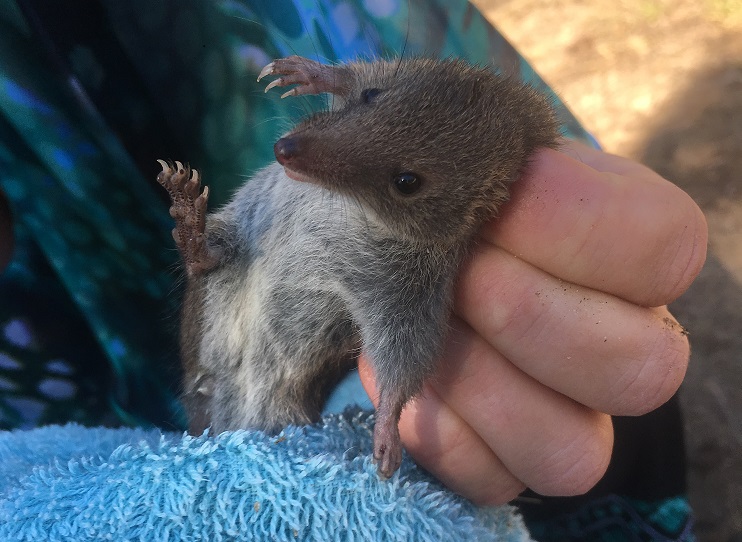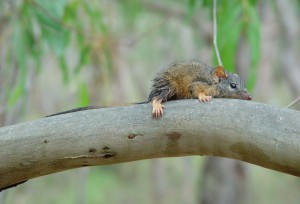The excitement of a Monday morning at Kurrawonga – our first Dusky Antechinus record!
It was a beautiful Monday morning at Kurrawonga and we had to take down one of our glamping-tents to get it repaired. The tent had been set up only a few weeks ago so we certainly weren’t expecting what happened next. After all the pegs and posts were removed we started to fold up the canvas and all of a sudden Toni saw something mouse-like disappear under the tent floor. We carefully started folding the tent up and managed to grab the little creature. Once we had it in hand we could see immediately it was no house mouse, so we took a bunch of photos before releasing it. An excited text message exchange followed with Mark who identified the animal as a Dusky Antechinus! This is the first Antechinus (of any species) detected on site since NGT became the custodian of Kurrawonga.

Dusky Antechinus; the long fore-claws (for digging) and stocky build are good indicators of their ground dwelling behaviour. Photo by Nicole Mojonnier
The Dusky Antechinus (Antechinus swainsonii) is a mainly nocturnal, ground dwelling marsupial that feeds mostly on soil invertebrates and lives in dense understory – so Kurrawonga provides plenty of suitable habitat. While they are relatively widespread across their geographic range, this find at Kurrawonga is right at the far western extreme limit of the species’ range on the mainland and is less typical than the wetter forests where they occur further east.
For more information about their nearby discovery by Mark a few years back (only a few kilometres away in Lower Glenelg River Conservation Park, which is linked to Kurrawonga via Lower Glenelg National Park), you might like to read this past blog, noting that the tissue samples taken by Mark at the time were later confirmed as the Dusky Antechinus by the SA Museum.

Yellow-footed Antechinus; note the yellow flanks, white eye-ring and pale skin. Photo by Mark Bachmann
In our part of Australia, we can actually find four different species of Antechinus: Dusky Antechinus (A. swainsonii), Swamp Antechinus (A. minimus), Agile Antechinus (A. agilis), and Yellow-footed Antechinus (A. flavipes). Of those four species the first two are ground dwelling species and the latter two are arboreal. Males of all four species only live long enough to breed once in their lifetime. Most females also only live for one breeding cycle, except for the occasional individual female which can live for up to two or three years.
So, this find is a great addition to Kurrawonga’s ever growing species list!
Follow this link to find out more about Kurrawonga and how it became NGT’s first Conservation Reserve in Victoria.
